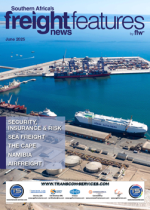Routing efficiency has become a strategic focus for shippers. “The sea freight sector is under pressure from Port of Loading (POL) delays, vessel rerouting in the ro-ro market, and TEU shortages. These disruptions are reshaping how we move cargo,” says Ashen Ramkissoon, sales manager at SA CARGO.“Today’s clients are no longer only looking for the fastest option, They want value-driven f lexibility. As a result, there is a clear shift toward offering ‘value vs time’ routing models, empowering clients to choose between speed and cost-efficiency based on their unique business needs,” he adds.In response to these changes, SA CARGO is cultivating strong partnerships with niche freight forwarders specialising in specific routes. “By tapping into their exclusive rates and deep route knowledge, we are able to offer more competitive pricing, while creating new business opportunities within the freight ecosystem.“It is a win-win, cost-effective solution for our clients, which increases volumes for our trusted third-party partners,” says Ramkissoon.Alternatives to the traditional TEU boxes are being explored to overcome the global shortage.They include Flat Racks (FRs) and Open Tops (OTs). “They’re ideal for non-weather-sensitive cargo that still demands efficiency.“We’re also anticipating an increase in multimodal vessels calling South African ports. The ability to load FCLs, breakbulk, and bulk cargo on a single vessel offers unmatched f lexibility.”SA CARGO has upped its service levels through investments in Transport Management Systems (TMS) and Customer Relationship Management (CRM) systems.“The TMS is set to significantly enhance coordination and visibility for us, our customers, and our transport partners.“The CRM is already improving how we manage interactions with both new and existing clients, allowing for quicker responses, better service, and stronger relationships. “Overall, we’ve improved internal efficiency and enhanced our customer experience, offering transparency and reliable real-time updates every step of the way,” he told Freight News.The systems and strategic partnerships are also helping clients to move cargo to the United States inside of the current 90-day tariff window. Shippers are being helped to reduce their carbon footprint through a switch to rail wherever possible. “This not only cuts down on emissions but also eases congestion around the ports,” says Ramkissoon. ER

